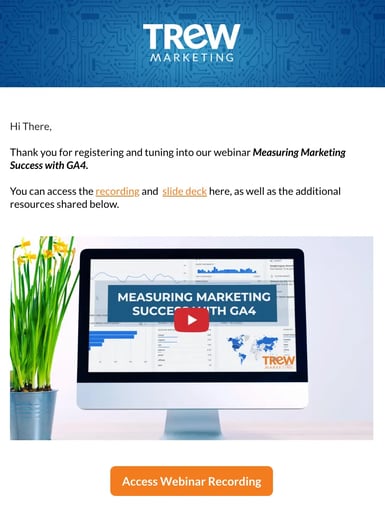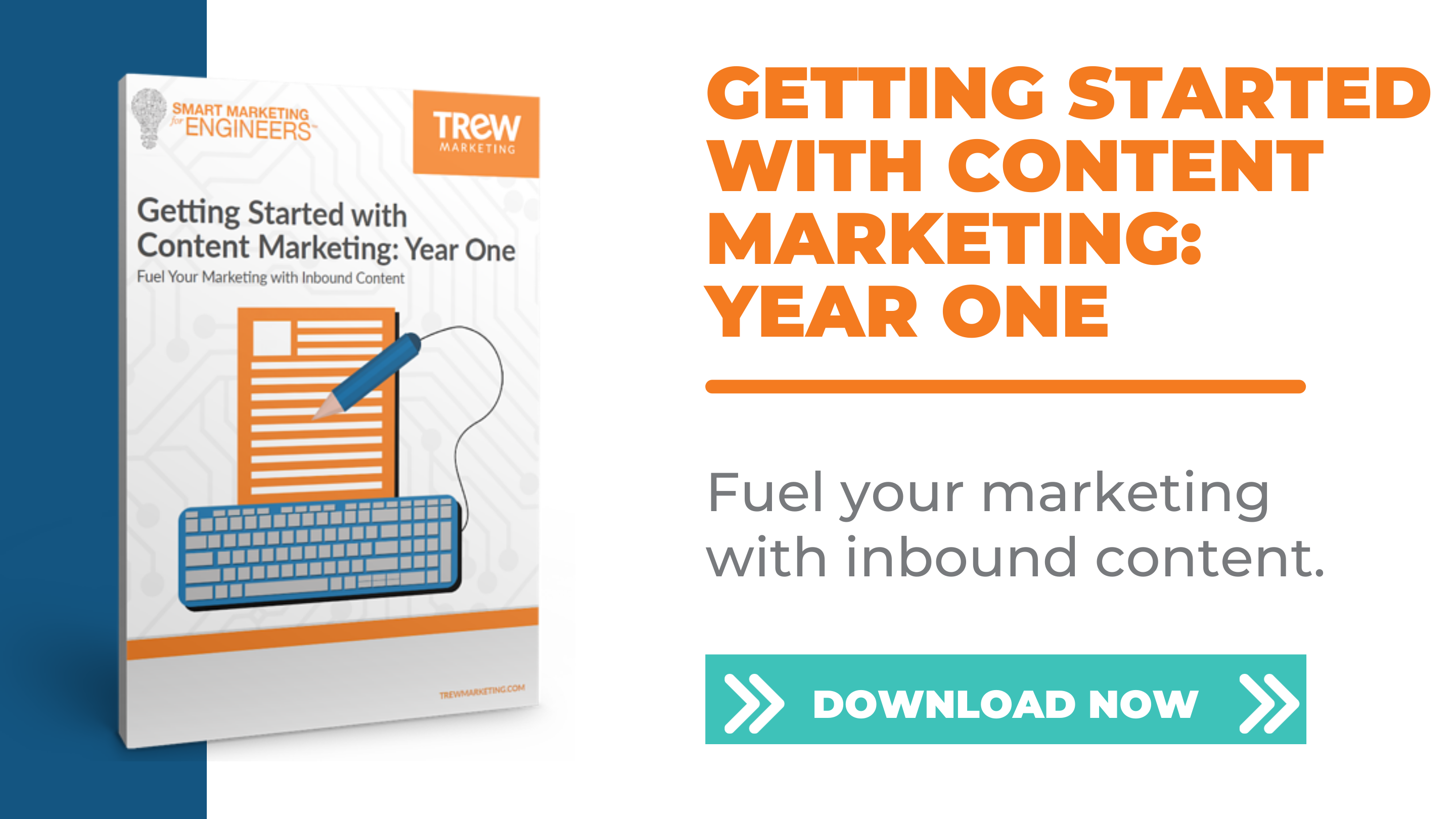7 min read
8 Best Practices for an Effective B2B Email Marketing Strategy
 Erin Moore
:
1/14/20 10:00 AM
Erin Moore
:
1/14/20 10:00 AM
Email marketing has been in use since the late 1970s, and email as a communication form is actually close to 50 years old. Over time, the use of email marketing and its best practices have evolved, shying away from the spray-and-pray model of the late 1990s to the sophisticated, targeted approach we see now.

Of the many avenues to reach B2B customers these days, many wonder, is email a dead end? Our research on engineers and technical buyers says no and shows that engineers are still looking to their inboxes for information.
Next to websites and online trade publications, e-newsletters and vendor/publication emails are considered somewhat-to-very valuable to engineers. 39% of engineers subscribe to 3-5 e-newsletters and 16% subscribe to six or more. We have found that the majority scan the subject lines to see what seems intriguing and delete the rest.
But what is special about email that makes it “alive” in today’s age of numerous marketing channels?
Email is one of the few channels that allows businesses to build an authentic connection between people, which makes it both a relationship-building and profit-building tool.
B2B email allows you to build relationships, foster brand awareness, promote content, generate leads, market your products, nurture leads, and more.
Let’s examine some of the best practices for building B2B email marketing strategies.
Best Practices to Elevate Your B2b Email Marketing Strategy
- Include email as part of your overarching marketing strategy
- Segment your database to keep emails relevant to recipients
- Improve data hygiene by keeping your database clean and up-to-date
- Stay abreast of internet privacy laws and email laws in any country or region that impacts your contacts
- Develop each email with one clear goal and prominent CTA
- Follow email design best practices to make emails functional and attractive across devices and email clients
- Test, test, test! Test emails across devices and email clients before sending
- Track core metrics and adjust your email strategy accordingly
Include Email as Part of Your Overarching Marketing Strategy
Email marketing should never be an afterthought. As you’re developing your annual marketing plan, think about where email fits in. Consider including email in the following ways:
- Does your plan include a focus on a specific audience segment, industry or persona? Build out an email nurture targeted to contacts in that group, educating them about how your company serves their needs, solves their specific problems or helps achieve their goals (learn more about email nurturing).
- Same idea can apply to goals on promoting a product or service area. Identify who in your database would be most relevant for the product/service, and build out a nurture series educating and offering resources around the product/service to fix the recipient’s problem or achieve their goal.
- Plan email as a promotional tactic for new resources, events, etc.
Email newsletters are another way to include email in your strategy. Newsletters should be sent at a consistent cadence, anywhere from monthly to quarterly. Consider segmenting your audience and sending email newsletters for each segment, customized to that group’s specific needs, goals and focus area. Follow these best practices for your email newsletter.
Segment your database to keep emails relevant to recipients
We’ve already touched on this best practice, but it deserves to be highlighted. According to Mailchimp, recipients are 75% more likely to click on emails from segmented campaigns than non-segmented campaigns (more statistics here).
Easy ways to segment include:
- Offer specific email types as subscriptions, so people can opt themselves into the information they are most interested in (this can also help keep you compliant with internet laws including GDPR)
- Break out newsletters by industry, customer type, persona, etc. based on segment priorities and distinctness of content/contact goals
- Send promotional emails to targeted groups as opposed to everyone in the database
Improve Data Hygiene by Keeping Your Database clean and Up-to-Date
Outdated and invalid contacts bog down your database, increase bounce rates and decrease engagement metrics. If your email marketing tool charges by database size, they can also be costing you quite a bit of money.
To keep your database up to date:
- Remove or update any hard-bounced contacts, as their emails are no longer valid
- Re-engage or remove aged contacts. Identify contacts that have not opened emails or visited your website within a certain period of time. At TREW, we use 18 months as the “inactive” threshold and send a re-engagement email to these contacts. If they do not re-opt in to any email type, we remove them from our database.
- Remove bad fit contacts, or exclude from emails
- Merge or remove contacts that have moved on from their companies
Stay abreast of Internet Privacy Laws and Email Laws
This may not be the most exciting item on our list, but it’s crucial to be aware of and compliant with applicable email laws. Several internet privacy and email laws have been introduced over the past few years that impact who a company can email and how, with hefty fines for non-compliance.
The main email laws impacting North American companies are:
CAN-SPAM
A US law built to fight spam emails that applies to all US companies. It requires that header information (from, reply to) is not misleading, that subject lines are not deceptive, and that every email includes the company mailing address and opt-out link. Learn more.
PIPEDA/CASL
The Canadian version of CAN-SPAM is a bit more strict, requiring that contacts consent to having their emails collected and used for marketing. Like CAN-SPAM, it requires that contacts have access to opt-out of email communications. It applies to Canadian companies only. Learn more.
GDPR
GDPR is the most stringent law of the bunch. Even though it is an EU law, it applies to all companies that process or hold information on any EU citizen, regardless of where the company is located. GDPR requires express opt-ins for specific email types and that only the information needed to complete the requested task be collected (so, if someone signs up for a newsletter, you can’t ask their birthday). Learn more.
Have more questions on privacy laws? View our internet privacy law guide.
Develop each email with One clear goal and Call-to-Action
Each email should have just one clear goal and CTA (newsletters are the exception). The email subject, copy, images, links and CTA button(s) should all support the goal and lead the reader to complete the goal action.

Follow Email Design Best Practices
Some basics of email design include:
- Avoid having a wall of text- use white space liberally, and include headers and sub-headers to break up content
- Use a minimum font size of 14pt to ensure readability across devices
- Set the email width to 600px
- Include a link to an online email version
- Define the height and width of images, and include alt-text
- Use table-based positioning as opposed to HTML/CSS-based positioning as some email clients will not follow these rules (cough, Outlook)
- Make your CTA buttons at least 44 x 44 px to make them easily clickable on mobile
Test Emails Across Devices and Email Clients before Sending
This is important! An email can look great on Gmail on your desktop computer, but be almost illegible on a mobile device or in Outlook. The email could be missing mobile code, or it could use CSS positioning which Outlook doesn’t read. Testing ensures that you can spot issues before an ugly or non-functional email gets sent to your contacts.
Many email sending programs have a way to preview emails across specific devices and email clients. As part of testing, you should also send a test email to yourself and your team to check links, review copy, and ensure images appear correctly.
Track Core Metrics and Adjust your B2B Email Marketing Strategy Accordingly
Core metrics on any email include the open rate, click rate, click-to-open rate, bounce rate, and opt-out rate. You will also want to measure the email goal completion rate.
- Open rate: The percentage of people who opened your email out of all the people it was delivered to. The average for B2B emails is 15.1%, and 20% is a solid percentage to strive for.
- Troubleshooting tip! If your open rate is low, examine your subject line. It should be actionable and brief, and it should highlight key content in your e-newsletter. Remember that A/B testing is a great way to analyze different types of subject lines to see which one resonates best with your audience.
- Click rate: The percentage of people who clicked a link in the email out of all the people it was delivered to. The average for B2B emails is 3.2%.
- Click-to-open rate: The percentage of people who clicked a link in the email out of all the people who opened it. The average for all emails is 14.3%. This metric specifically indicates how well your email content performed.The average for all emails is 14.3%.
- Troubleshooting Tip! If you have a low CTR or CTOR, your recipients may believe your content lacks relevance or usefulness. To further troubleshoot, make sure that the content mentioned in the subject line is easy to locate and click on as soon as the recipient opens the email. Next, evaluate your design and content length (brevity is key). Poor design and long emails both repel many readers. Consider utilizing a sidebar if your email or e-newsletter is running long or, better yet, cut down to the most important information.
- Bounce rate: The percentage of emails that were not accepted by the recipient inbox out of all the emails sent. There are a couple reasons why an email bounces, some permanent and some not, but it’s typically due to an invalid email address, content issue, or reputation issue. Bounce rate should be under 1%, and most email sending tools will stop a send if it surpasses 5%. There are two different types of bounce rates:
- Soft Email Bounce: Email was rejected because of a reason on the recipient’s end, such as company security firewalls. This bounce rate should be 1% or lower.
- Hard Email Bounce: Email could not be delivered because the recipient’s email address was not valid or the recipient’s inbox was full (usually the sign of an abandoned email address). A high hard email bounce rate usually means your database is very dated or not permission-based. This can result in your company being blacklisted by your email service provider. Your hard email bounce rate should be under 5%.
- Troubleshooting tip! If your bounce rate is too high, add a step to your email workflows that puts hard bounces in a separate segment in your database, and delete these on a regular basis.
- Opt-out (unsubscribe) rate: This is the percentage of contacts who took action to unsubscribe from your mailings directly from the email. As you might imagine, a high opt-out rate is a red flag that either your content completely missed the mark or you are spamming a broad list of contacts who don’t know you and aren’t interested in your content. It could also be that you are sending your content too often and fatiguing your database. In most cases, your opt-out rate for each email should be <0.1 percent. The exception is for companies that have not engaged in email marketing in a while or are trying to re engage aged contacts.
- Troubleshooting tip! Examine the origin of the contacts in your database. This often indicates that the company has entered a cold list of contacts who don’t know your company and are likely not a good fit (see chapter 9 of Content Marketing, Engineered for more on mailing list development). Suppress these suspect contacts from your regular emails and take separate actions to either entice those contacts to subscribe or remove them from your CRM altogether. Also consider your email frequency. You may be sending too many and repelling the very contacts you worked so hard to capture.
One last tip for improvement: Consider your send frequency. If your email/e-newsletter cadence is infrequent or sporadic, readers are less likely to engage with you. The key is to select a frequency that you can consistently deliver on and set expectations with your readership.
And there you have it! To learn more, download our guide, Getting Started with Content Marketing, to get started creating great content to promote in your email marketing efforts.
TREW is a marketing agency dedicated to reaching engineering and technical audiences through a range of marketing initiatives. Contact us today to learn more about the services we offer.
SUBSCRIBE TO OUR BLOG FOR THE LATEST UPDATES
Erin Moore
 Erin has worked with 50+ technical companies across website strategy, content development, sales enablement, and marketing tool stack development. She’s a strategy-first marketer with a passion for persona development and a deep understanding of how marketing metrics tie into the bottom line. Erin holds a B.S. in public relations with a minor in anthropology from the University of Florida. She lives in Austin, TX, with her husband John and their dog and cat.
Erin has worked with 50+ technical companies across website strategy, content development, sales enablement, and marketing tool stack development. She’s a strategy-first marketer with a passion for persona development and a deep understanding of how marketing metrics tie into the bottom line. Erin holds a B.S. in public relations with a minor in anthropology from the University of Florida. She lives in Austin, TX, with her husband John and their dog and cat.
About TREW Marketing
TREW Marketing is a strategy-first content marketing agency serving B2B companies that target highly technical buyers. With deep experience in the design, embedded, measurement and automation, and software industries, TREW Marketing provides branding, marketing strategy, content development, and digital marketing services to help customers efficiently and effectively achieve business goals.




